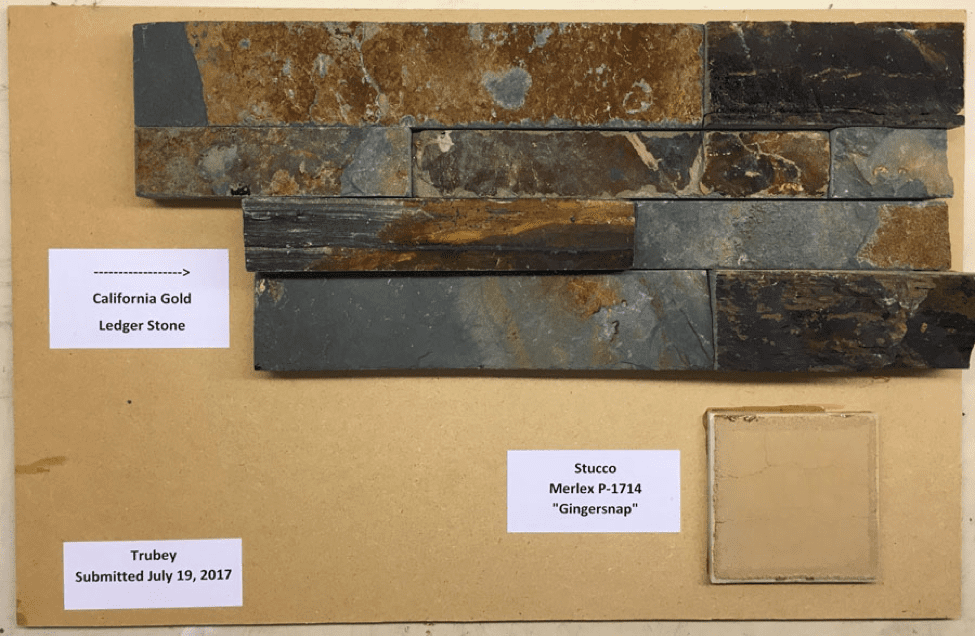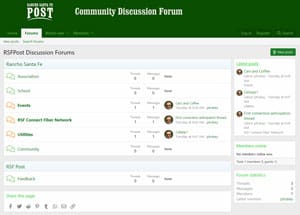From the MyRSF.net archives of the RSF Post
Do It Yourself CDRC Submission
Author: Phil Trubey
Date: August 31, 2017
I'm not a fan of much government regulation. Indeed, it wouldn't be an exaggeration to say that I would rather have a root canal than go through a long regulatory review process for something I personally wanted to do.
It was with that mindset that I tackled my latest house renovation project. Now, I'm no newbie when it comes to renovations requiring Art Jury approval (sorry, Covenant Design Review Committee, old habits die hard). Over the years, I think I've submitted eight projects requiring CDRC approval, including my very first one to build a house. From the foundation on up, it was so completely rejected that the letter back from the old Art Jury essentially said "start over."
My latest project was small yet very visible: Changing stucco color and finish to existing retaining walls, and adding stone to gate pilasters, all on the street entrance and the entire front yard.
Normally, when you go through the CDRC process for a house addition, you hire an architect that handles both the CDRC submittals and county submittals. But for this process, I was loath to spend the thousands of dollars that hiring a professional would have entailed. So I did it all myself. "Good luck," my wife said.
Once I locked down the exact stone, and stucco texture and color (i.e. the wife approval process), my next step was to pull the materials together for the submittal. Actually, the very first step was to download the CDRC submittal schedule to give me (and the contractor and the wife) a deadline to work toward.
The CDRC wants to see a sample board of proposed materials and colors. I already had the chosen stucco color square from the stucco company (free samples) from going through the initial color selection process with the contractor. For the stone, we were looking to match some existing ledger stone called "California Gold," and, luckily, Home Depot carries more or less that same ledger stone. I even got my sample piece for free since there was a broken piece on the shelf and the checkout lady didn't charge me for it.
From some old scrap, I cut an approx. 11"x17" piece of wood and used two-part epoxy glue to stick the stucco and stone samples onto the board. I made some labels, glued them on, and, voilà:

Total cost so far: $0 (I had the two-part epoxy glue lying around from another project).
The next part of the submittal was to provide a "plot plan" showing property lines and where the work would be done. You mean like a 3'x4' blueprint sheet? Yeah, that's probably what they meant, but I wasn't about to go through the agony of creating such a map and printing it at Kinko's large format printers. And, besides, that would have cost an extra $20 or so.
With than in mind, I decided my submittal would be on regular 8.5"x11" sheets of paper. Maybe to make the submittal more palatable, I probably stuffed the document with more information than they were looking for. It had:
- A one-page overview of the project, what I wanted to do, description of where.
- A one-page picture made from a Google map image of my property with the terrain feature turned on (so you could see the street, driveway, house, etc.), which I edited in Photoshop to also show the property boundary. The property boundary was literally hand drawn. If it actually matched the real property boundary that would have been a nice coincidence, but it was close enough.
- On that map, I also put in numbers 1, 2, 3, 4, etc., which corresponded further down in the document to on-the-ground pictures I took of the existing crappy looking retaining walls and pilasters ("see, anything would look better than what it looks like now!").
- The rest of the document consisted of those pictures each with a legend.
The next thing needed was to fill out the Association's submittal form. I didn't quite get that right, but Gia at the Association front desk let me know what I had missed and let me fix it.
The final piece of the puzzle was a USB stick - the Association now wants all submittals to not only be submitted via paper, but to also include an electronic copy. I stuck the above picture of the sample board and a PDF version of my 8.5"x11" submittal document onto a $10 USB stick and I was all set.
Total cost for the submittal: $10 for the USB stick. Oh, wait, and $312 in Association permit fees. Ouch.
After dropping off to Gia the sample board, printed document, filled-in application, USB stick, and $312 check, all I could do was wait. The project was too small to require or warrant an in-person meeting with the CDRC.
22 days later I got an answer: Approved.
 Discuss this article in the Association Forum.
Discuss this article in the Association Forum.

 Chronicles
Chronicles